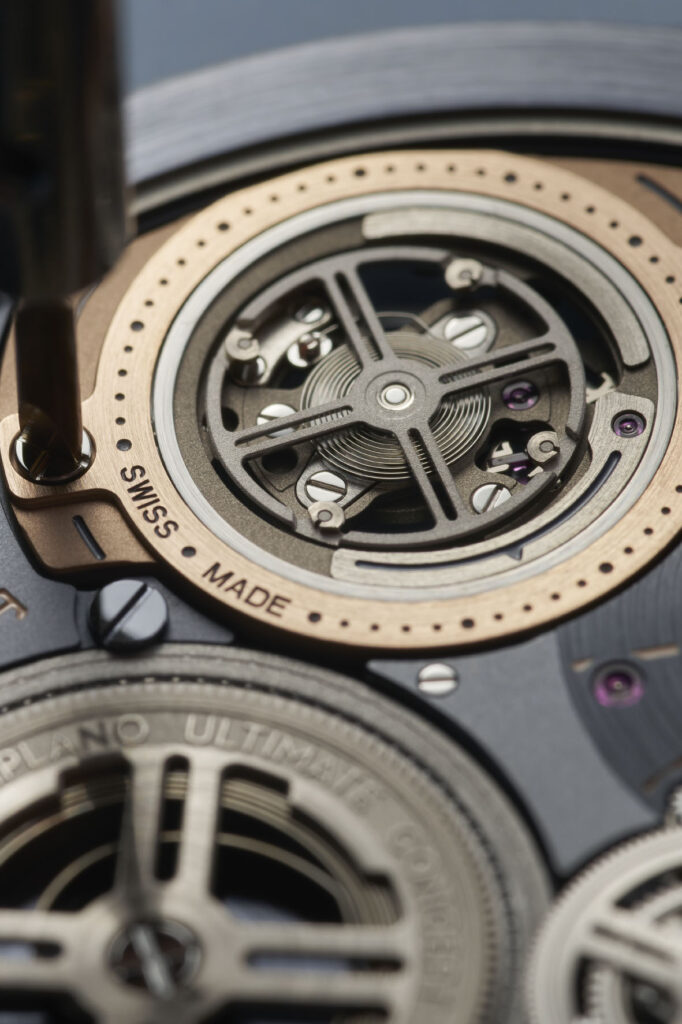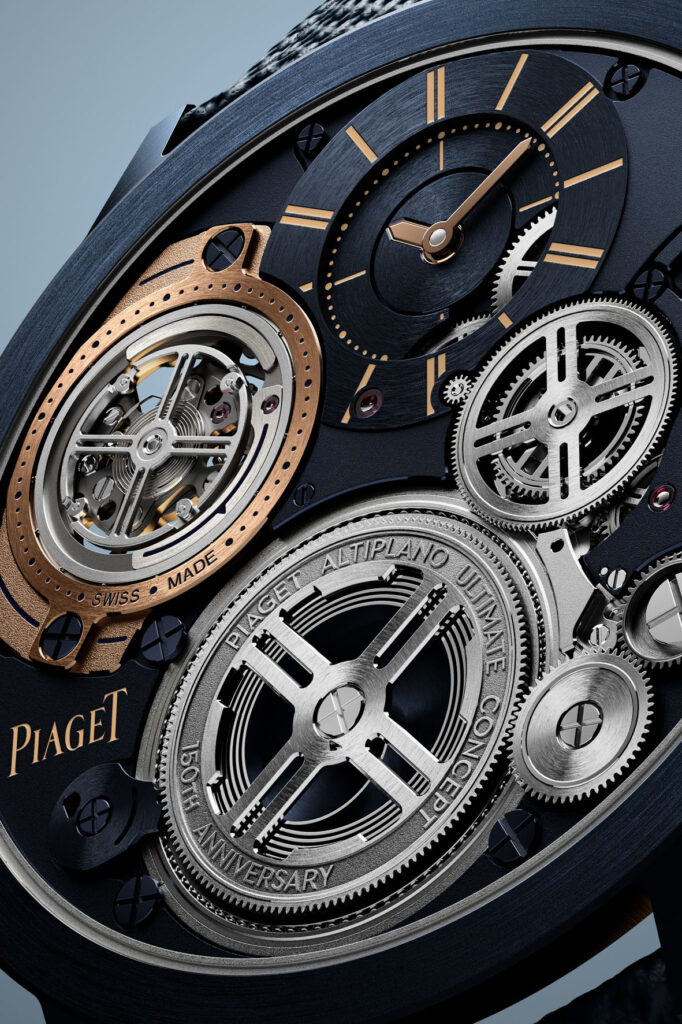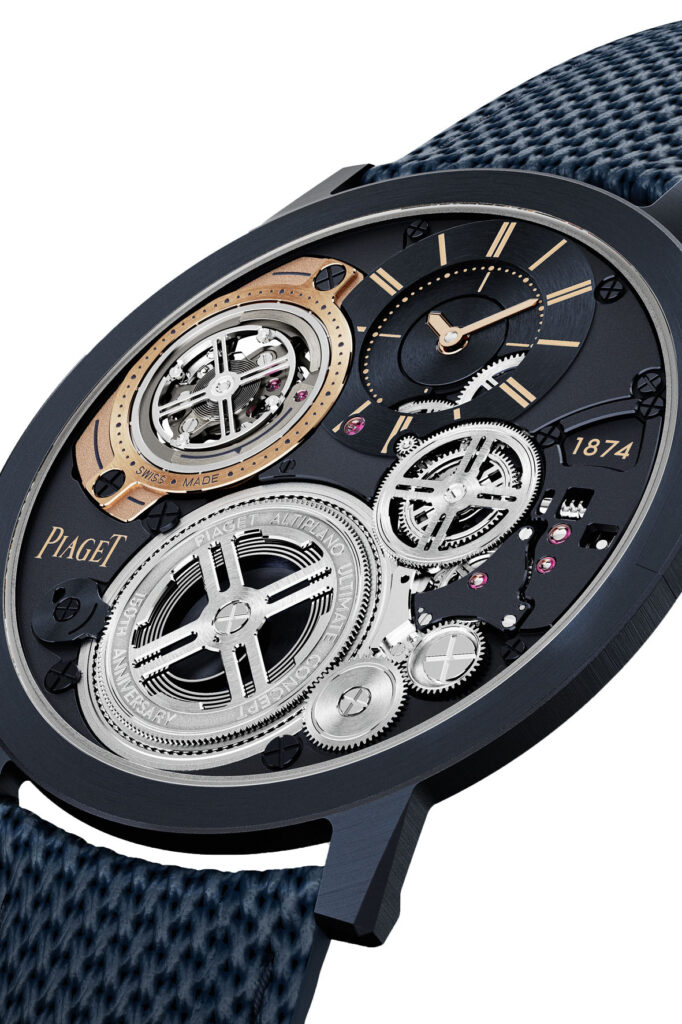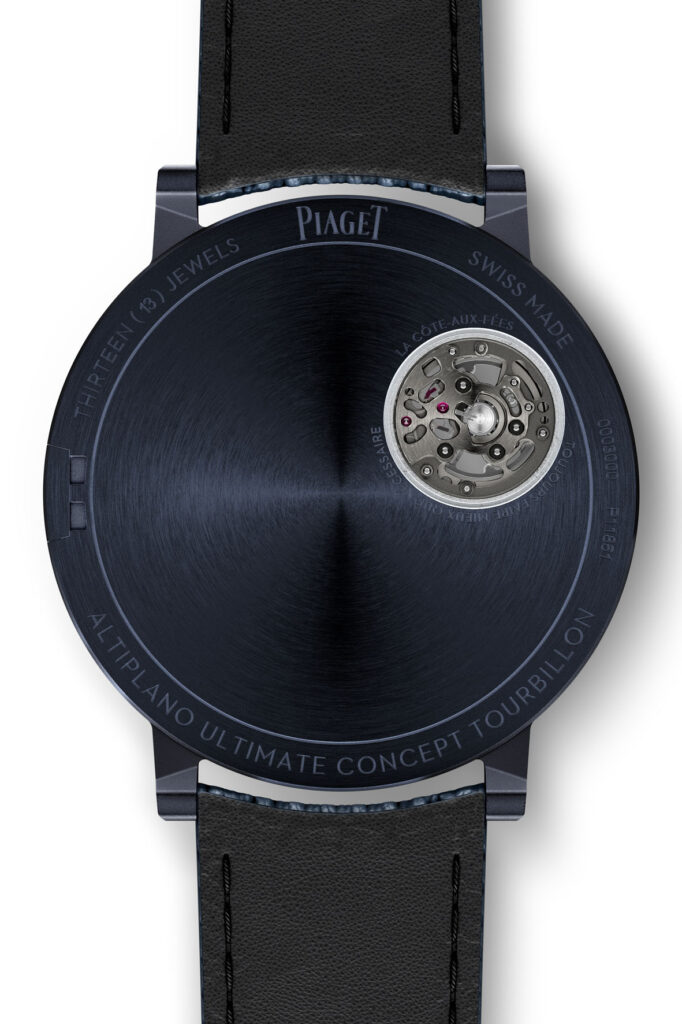Piaget: Altiplano Ultimate Concept Tourbillon 150th Anniversary
9 May 2024When you say ultra-flat, Piaget comes to mind. There are really no other brands for which the association of ideas is so obvious. Throughout its history, the brand has waged a battle first with millimetres, and then with microns, to take certain references – mainly from the Altiplano collection – to extreme thicknesses. The highest point in this battle was thought to have been reached in 2018, with the Altiplano Ultimate Concept, but in the La Côte-aux-Fées and Geneva workshops, they have accomplished the impossible. With the Altiplano Ultimate Concept Tourbillon 150th Anniversary. Yes, you read that right: a tourbillon inside an ultra-flat case. Which, not surprisingly, is the thinnest tourbillon watch in the world: 2 mm including the crystal. A record.
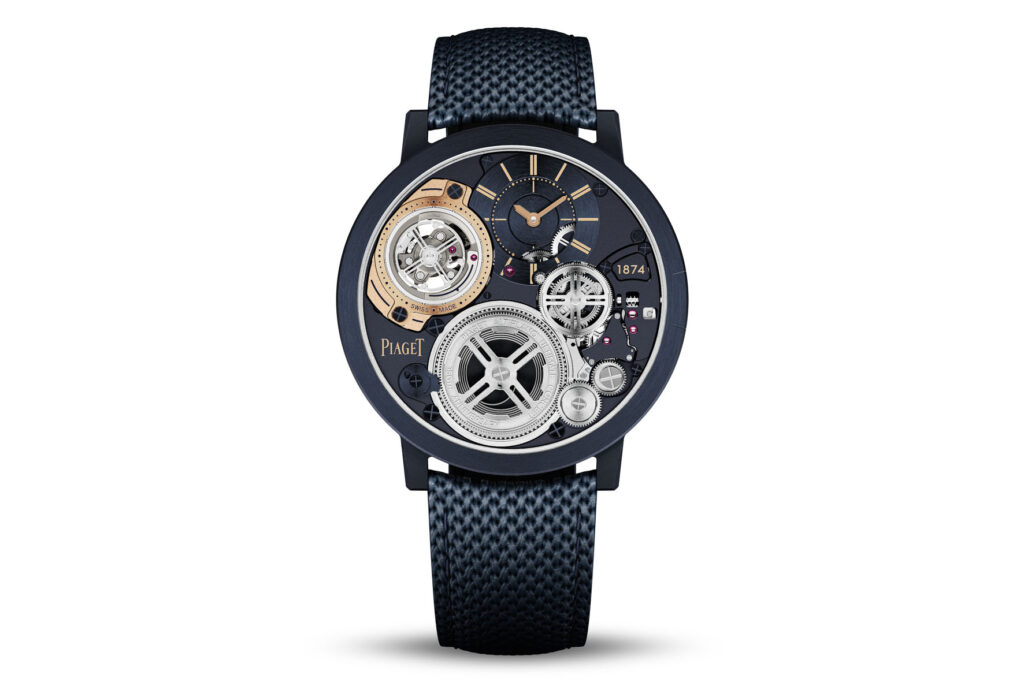
From a visual point of view, the technical solution is impressive. A tourbillon looking two-dimensional has never been seen before and, on the wrist, it is even more incredible. We wore it at Watches and Wonders Geneva, where the Altiplano Ultimate Concept Tourbillon 150th Anniversary was presented. A unique sensation that we will return to in a moment. Before we do, however, it’s good to take a look at the most important calibres that have elevated Piaget into one of the greatest ultra-thin watches manufacturer.
PIAGET AND THE VOCATION TO ULTRA-THINNESS
A story that began early. Only a year after the brand moved to the new manufacture in 1945, Piaget presented the 5P calibre; while in 1957 Valentin Piaget presented the 9P, one of the thinnest mechanical movements of the time, 2 mm thick. In 1960, it was the turn of the thinnest automatic movement, the 12P calibre with micro-rotor, only 2.3 mm thick.
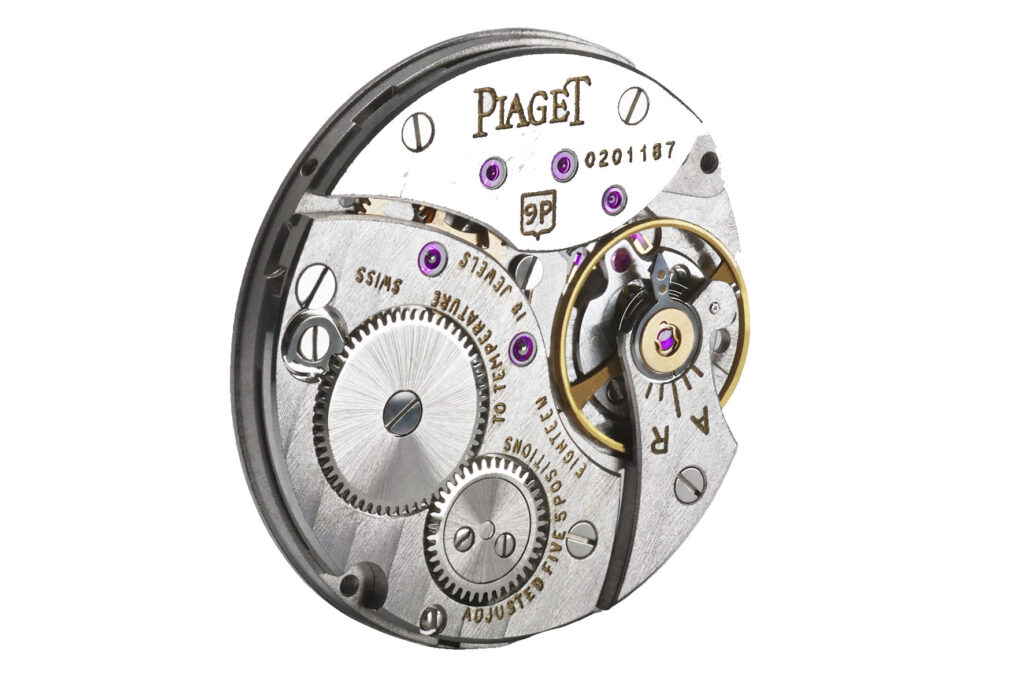
The 1950s and 1960s saw the birth of calibres such as the 2P, rectangular, 4P and 6P, with diameters of 4 and 6 lines respectively, hence their names. In the mid-1970s, at the hands of Jean Lassale, the 20P and 25P calibres saw the light. The former, based on Lassale’s calibre 1200, was a 1.2 mm thick movement, while the 25P, its automatic version, came in at 2.08 mm. Much thinner than any movement created before, these calibres incorporated innovative concepts such as, among others, the use of ball bearings.
The 1970s saw the so-called quartz crisis unfold. Piaget nevertheless continued to play a leading role and joined the consortium of Swiss brands that created the first quartz wristwatch prototype in 1966, with the Beta 21 movement. It also developed calibres such as the ultra-thin 7P in 1976, which powered the first Polo.
With the renaissance of mechanical watchmaking in the 1980s and 1990s, Piaget carried on its tradition of making mechanical movements, including ultra-flat ones. Over the years, the manual 430P, which replaced the 9P (2.1 mm), and its automatic version, the 500P, took shape. Without forgetting the 1200P with micro-rotor, introduced in 2010, and the 1270P with micro-rotor tourbillon.
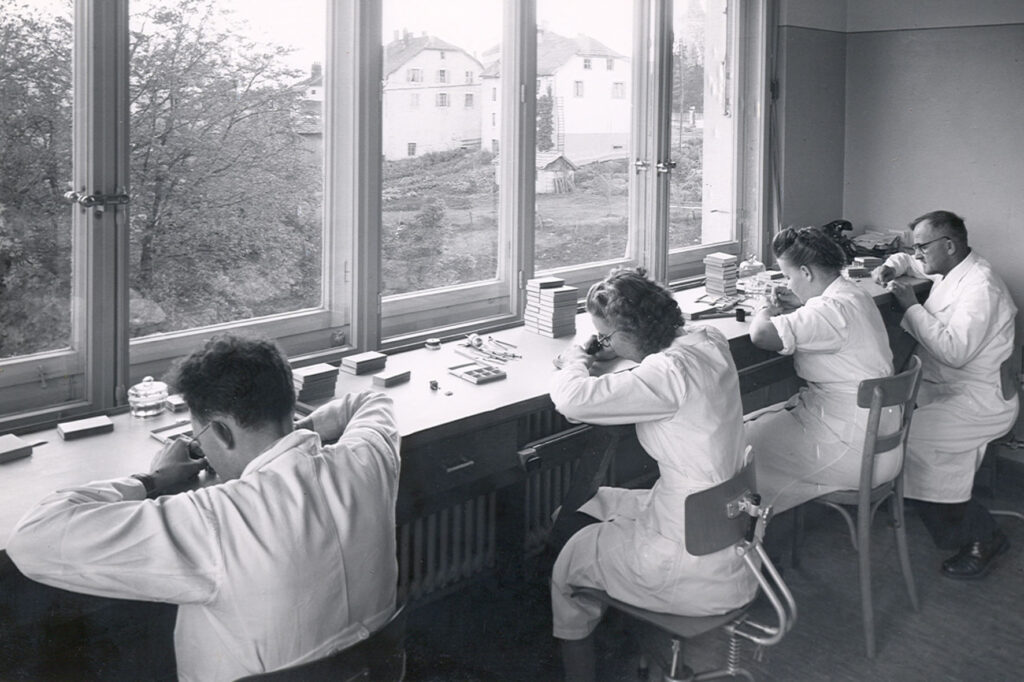
The rest is recent, excellent history, and is called Calibre 900P, presented in 2014 – and later the 910P, its automatic version with a peripheral rotor. A movement that, thanks to the fusion of the plate and caseback, has allowed Piaget to present Altiplano watches only 3.65 mm thick. All the way to the Altiplano Ultimate Concept mentioned above, whose impressive thickness of 2 mm was achieved by fusing the main plate, case and bezel into a single component.
THE CHALLENGE OF THE ALTIPLANO ULTIMATE CONCEPT TOURBILLON
And today we come to the Altiplano Ultimate Concept Tourbillon 150th Anniversary: the second ‘gift’ – after the Polo 79 – that Piaget has made to itself to celebrate its 150th anniversary. With a diameter of 41.5 mm and a thickness of 2 mm, this means that the Maison has placed a tourbillon inside the Altiplano Ultimate Concept’s case while maintaining its incredible thinness. As trivial as this may sound, in fact it’s not at all. Not least because, to be fair, chronometry has never been the main objective for the Altiplano Ultimate Concept: what Piaget has accomplished here is an exercise in pushing the limits of micro-mechanical engineering.
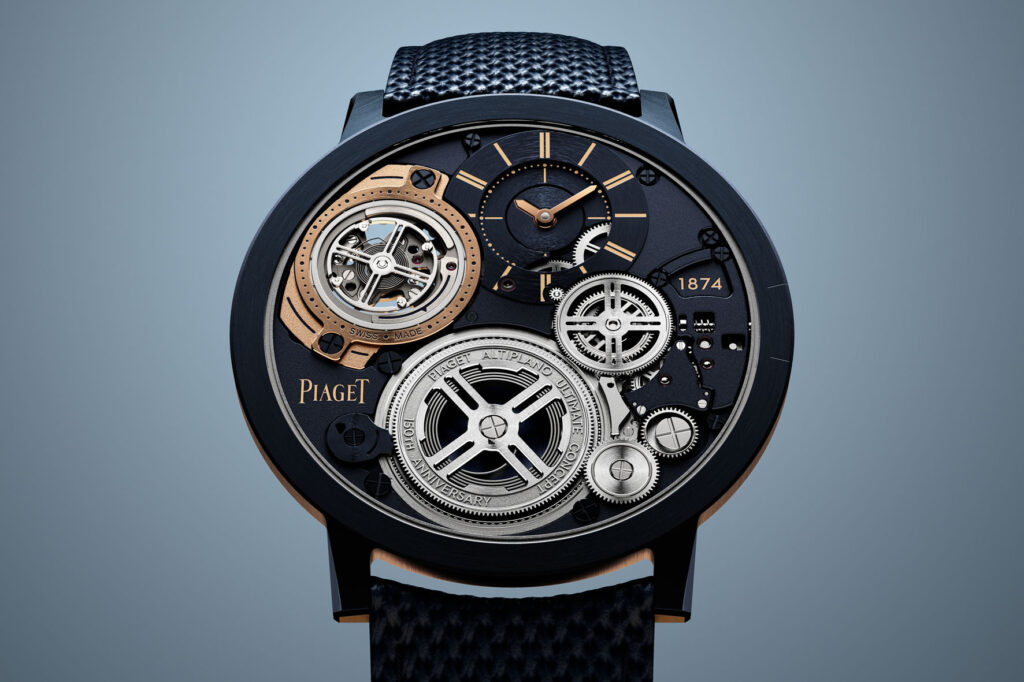
The non-triviality of this feat also lies in one fact. To create the calibre 970P-UC which puts the Altiplano Ultimate Concept Tourbillon 150th Anniversary into motion, the brand’s engineers pretty much redesigned the entire calibre, compared to its predecessor’s 900P-UP. According to Piaget, 90% of the parts are new, with modifications that went as far as reducing the number of spokes on the wheels in order to cut the movement’s energy consumption as much as possible.
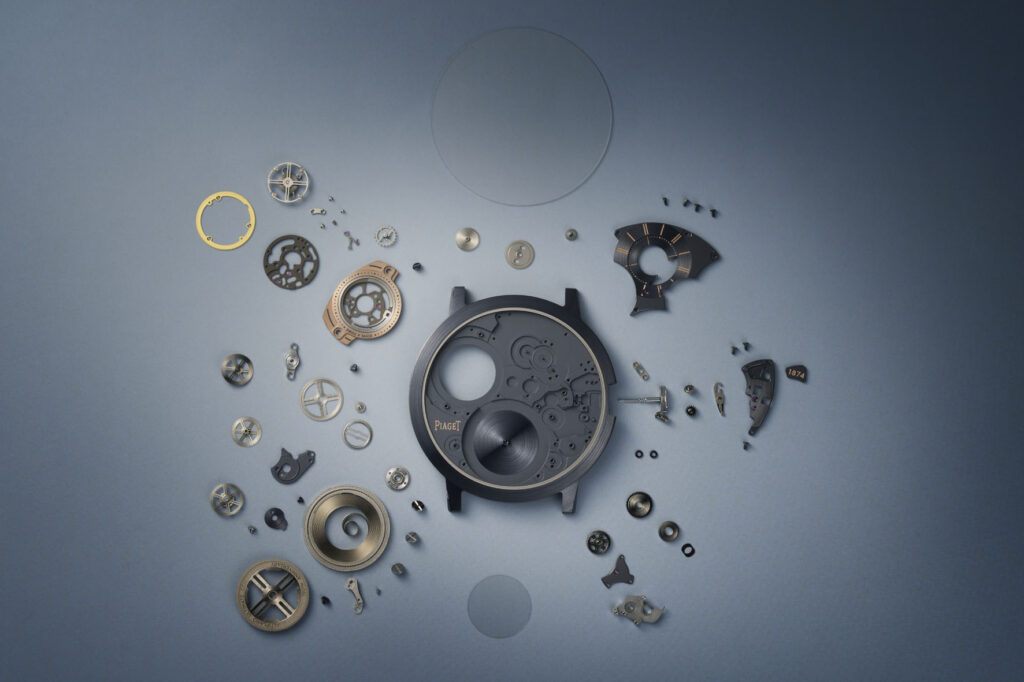
Compared to the Altiplano Ultimate Concept, the Tourbillon is different in every respect except, of course, the thickness. Although the two models may look very similar, as mentioned, the mechanics of the Tourbillon calibre 970P-UC have been completely revisited. Instead, one of the main features that the Altiplano Ultimate Concept Tourbillon shares with its 2018 predecessor is the M64BC cobalt alloy case.
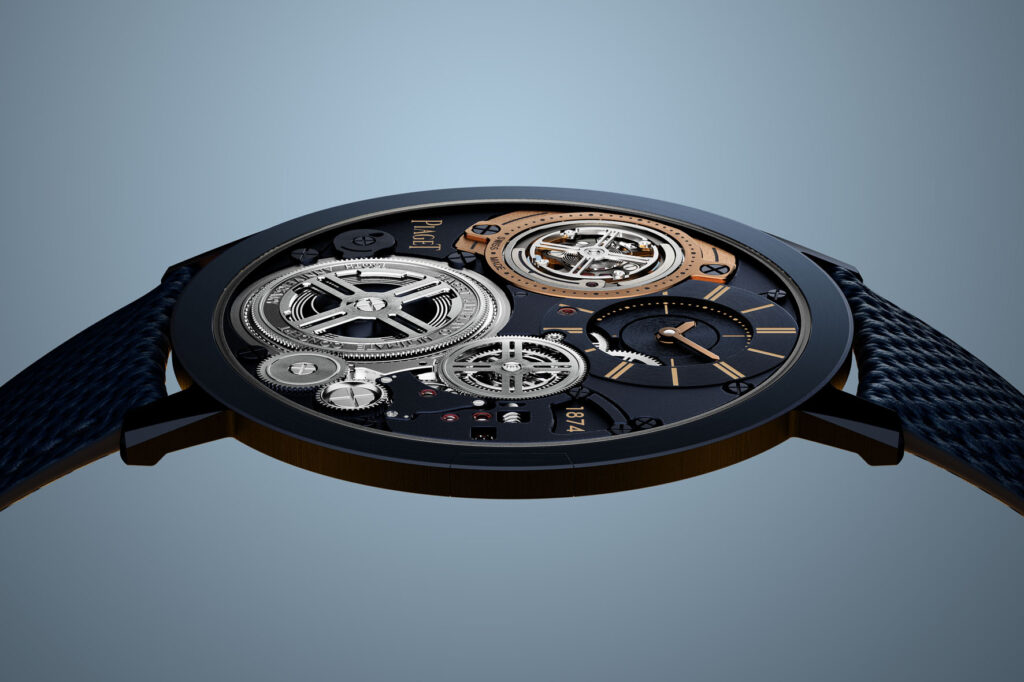
An unusually hard alloy created because it is ideal for such a thin case, which requires above-average rigidity. Many other metals, in fact, would get deformed if the watch were strapped too tightly to the wrist. This is why the case back also acts as a plate for themovement, since all moving parts are located inside it. A solution found on many ultra-flat calibres since the 1970s, and also adopted by Piaget on the 2018 Altiplano Ultimate Concept.
RETHINKING THE TOURBILLON
The difference here, as mentioned, is the tourbillon – which Piaget revised both on the basis of its own creativity and, above all, for the difficulties involved because of the small space available within the case. The only aspect it shares with most tourbillons is the one-minute rotation. For the rest, forget the classic architecture, the one dating back to Abraham-Louis Breguet, which features a rotating cage attached to a fourth pivot, powered by the third wheel.
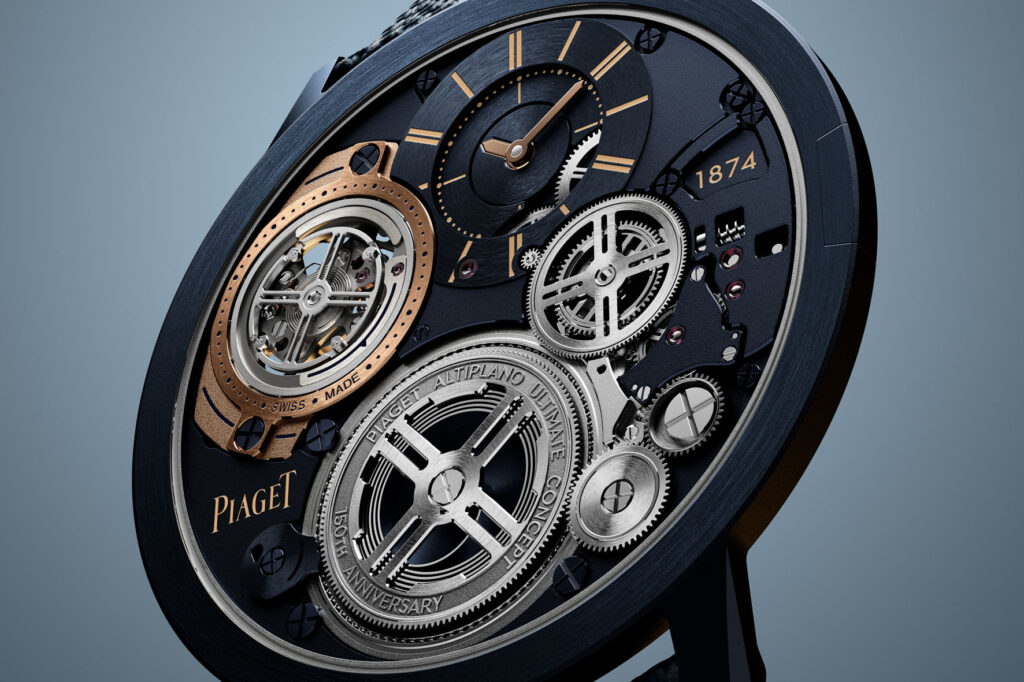
The cage of the Altiplano Ultimate Concept Tourbillon 150th Anniversary, on the other hand, is built around several circles, so as to minimise thickness. This type of architecture implies the creation of a more complex rotation train, which led to the 90% new components mentioned above. This re-engineering wasnecessary so that the movement could accommodate the tourbillon inside.
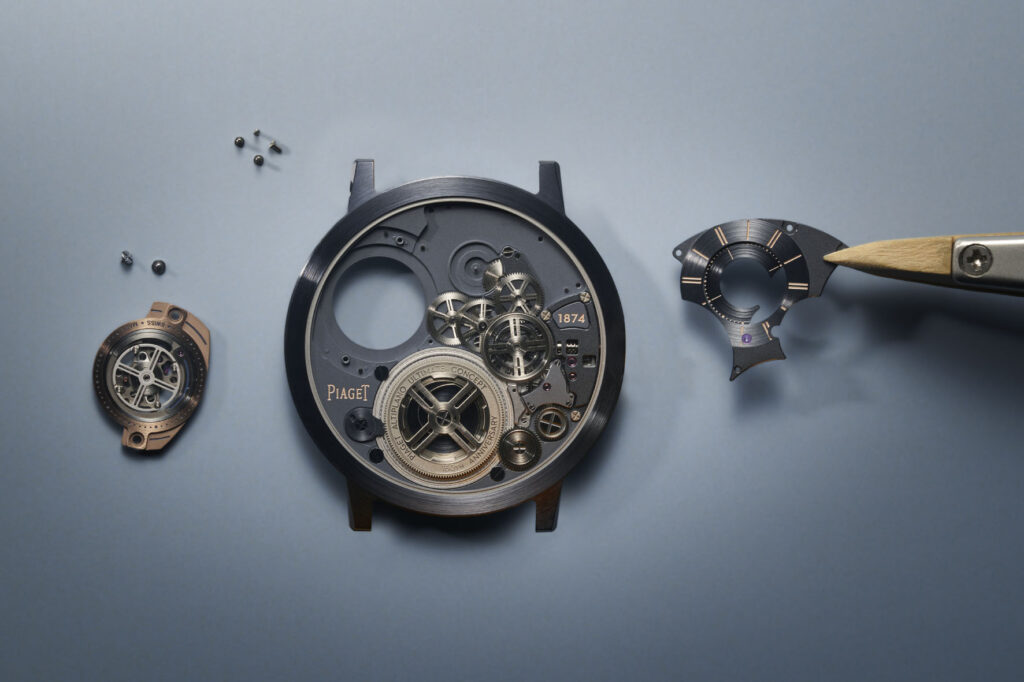
This design creates an architecture for the tourbillon cage which gives the impression that it is floating within the movement without being connected to it. In fact, the gears that compose it are hidden by the surrounding plates, and only the escapement wheel is barely visible.
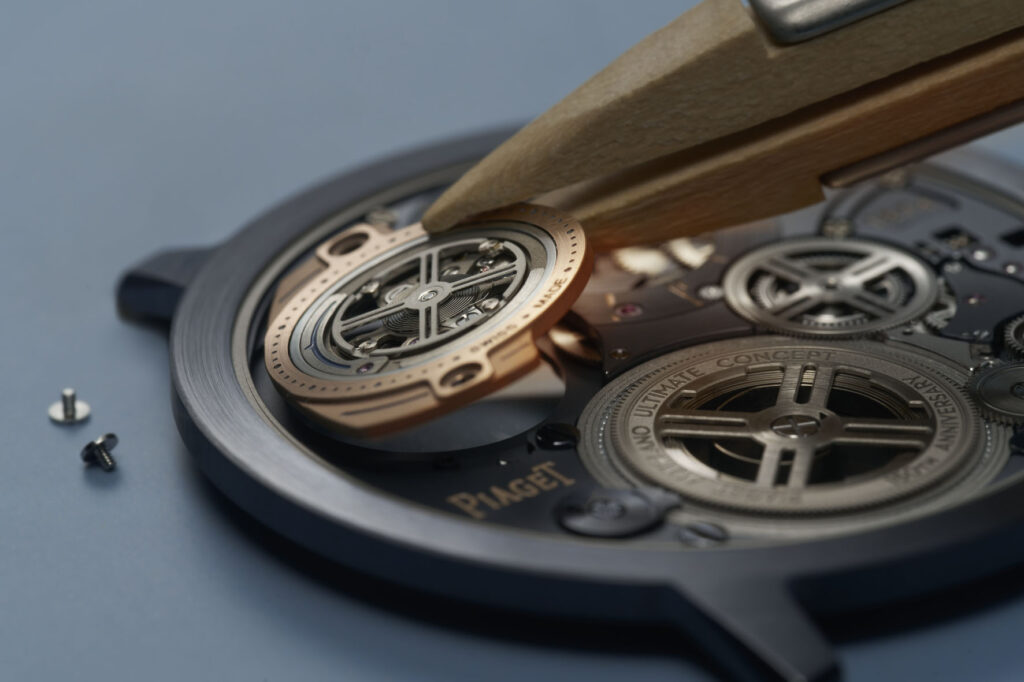
In addition, what helps to keep the tourbillon so thin is the use of ball bearings, six of them. Jean Lassale had already used them on his calibre 1200 to reduce its thickness. Since a wheel fixed to a ball bearing does not require the classic two pivots – top and bottom – necessary for the traditional solution, but only one, the movement can be thinner. Hence, the circumference of the Altiplano Ultimate Concept Tourbillon 150th Anniversary’sring-shaped tourbillon is supported by a large-diameter ceramic ball bearing that forms its cage, enclosing the balance wheel and escapement, and powering the one-minute rotation.
A novel and, in its own way, ingenious construction, subtle yet stable, with the use of ceramic balls minimising backlash and generating only negligible friction. Rotating at the traditional rate of one revolution per minute, the tourbillon cage positioned at 10 o’clock also serves as a seconds indicator.
PIAGET’S SAVOIR-FAIRE
Because, let’s not forget, this watch benefits from plenty of technology but also from awe-inspiring aesthetics. The hour and minute indications are in a slightly off-centre counter positioned between 12 and 1 o’clock, unlike the other Altiplano Ultimate watches on which it is placed between 11 and 12 o’clock. The rest of the dial is almost entirely monopolised by the time train, with the large barrel at 6 o’clock. The tourbillon is also visible through a small window on the case back.
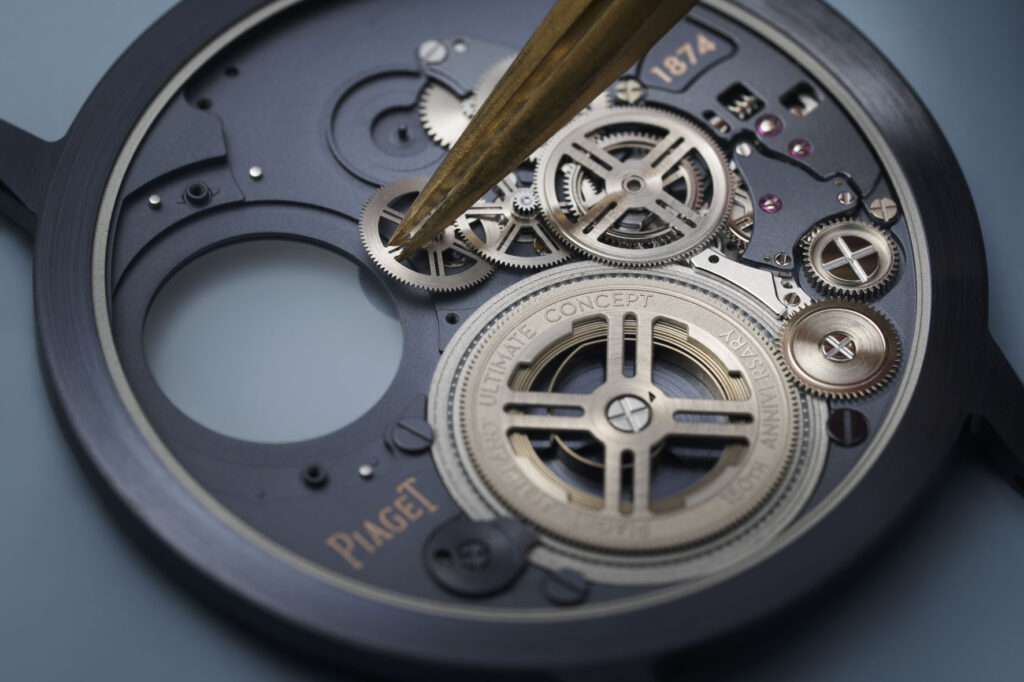
The hour markers are baton-shaped, as is the minute hand. The hours are also indicated by a hand, but positioned above a rotating disc. The date positioned at 2 o’clock, 1874, proudly recalls the 150th anniversary of the Piaget Maison, whose logo at 8 o’clock counterbalances it. Interestingly, at 9 o’clock, there is a small window through which one can glimpse the winding pin’s endless wheel, attached to the crown.
The latter is small, 2 mm thick like the case into which it is integrated. For this reason, a tool is required to extract it in order to wind and adjust the watch with ease. This same tool, which looks like a screwdriver, is equipped with a system that prevents too much force being exerted on the crown once the winding process has been completed. Excessive winding, in fact, would risk damaging the movement components, which are very small and extremely delicate.
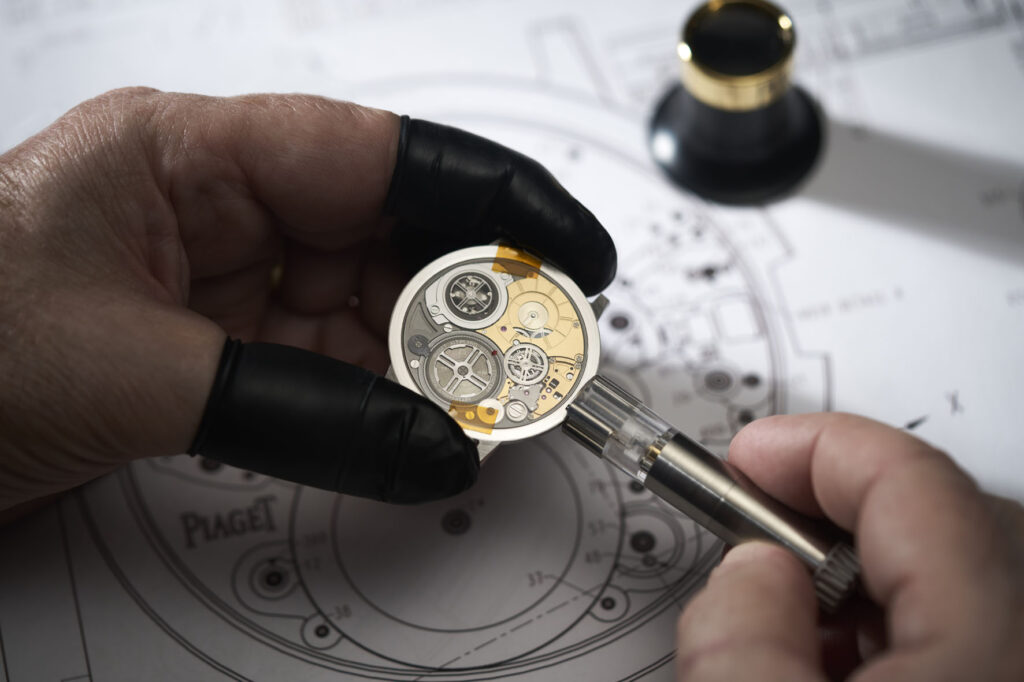
Speaking of the movement, the hand-wound 970P-UC calibre works at a frequency of 4 Hz and has a power reserve of around 40 hours. A respectable performance achieved not only by using ball bearings, but also by working on the balance spring. It has been redesigned according to the higher power factor: its thickness has been slightly increased in order to provide the additional energy required to extend the watch’s autonomy.
The M64BC cobalt alloy of the case is also used to make the pin buckle which fastens the blue textured calfskin strap. Such a highly engineered piece is not produced in a limited edition but will, of course, be made on demand at a price of €735,000.
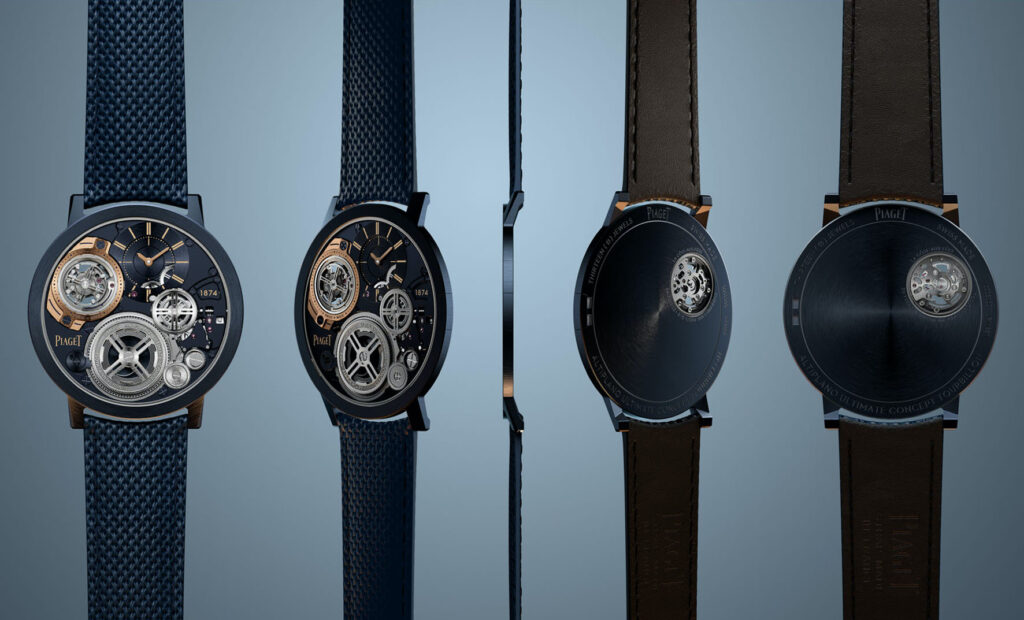
In short, Piaget could hardly have found a better way to celebrate its 150th anniversary. The Altiplano Ultimate Concept Tourbillon 150th Anniversary marks this celebration, but it also comes 67 years after the invention of the first ultra-thin calibre, the 9P, and 6 years after the creation of the Altiplano Ultimate Concept, the world’s thinnest watch. If ‘always do better than necessary’ has been the brand’s motto since its origins, with this timepiece it seems to have truly achieved that ‘better’. What will the next goal be?
By Davide Passoni

